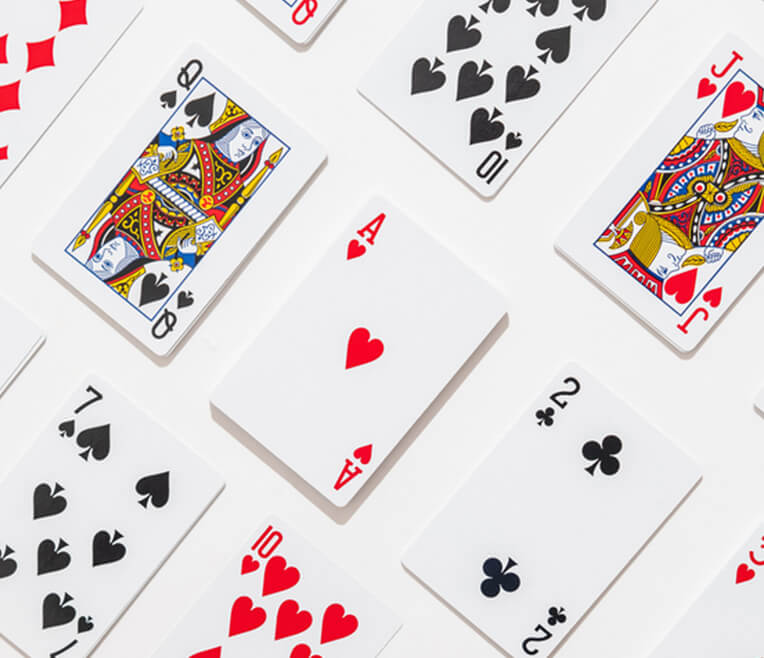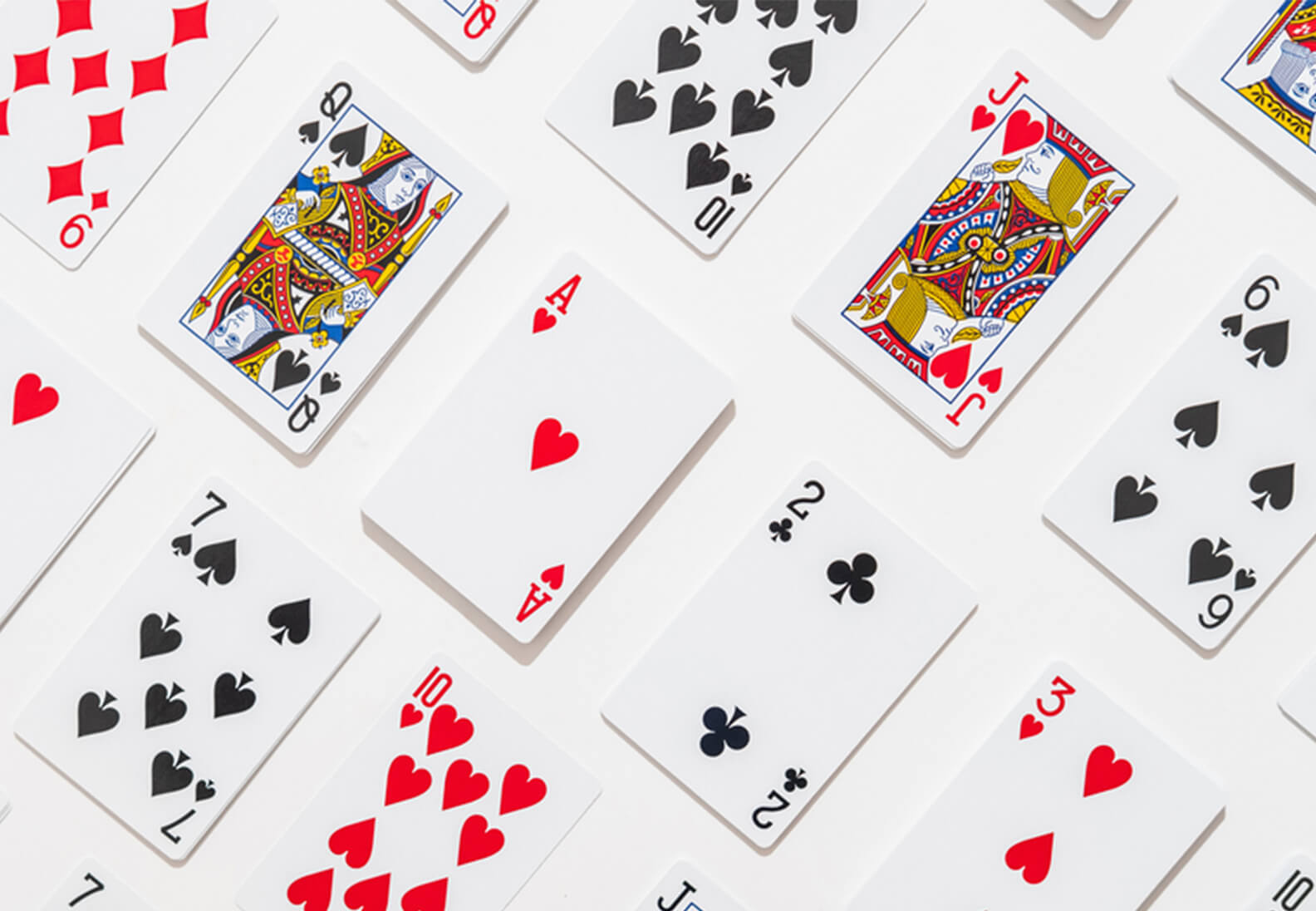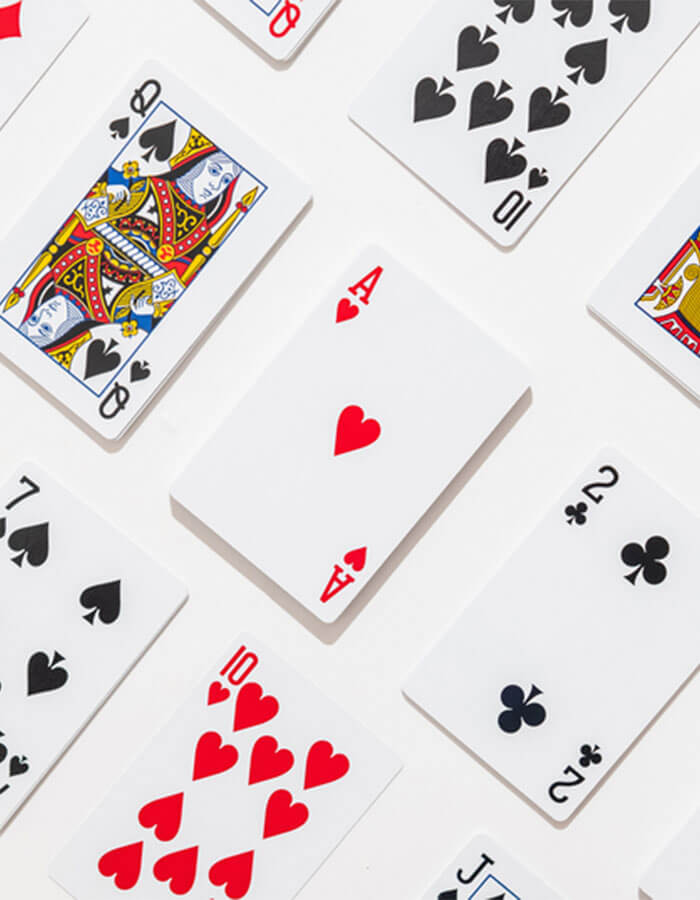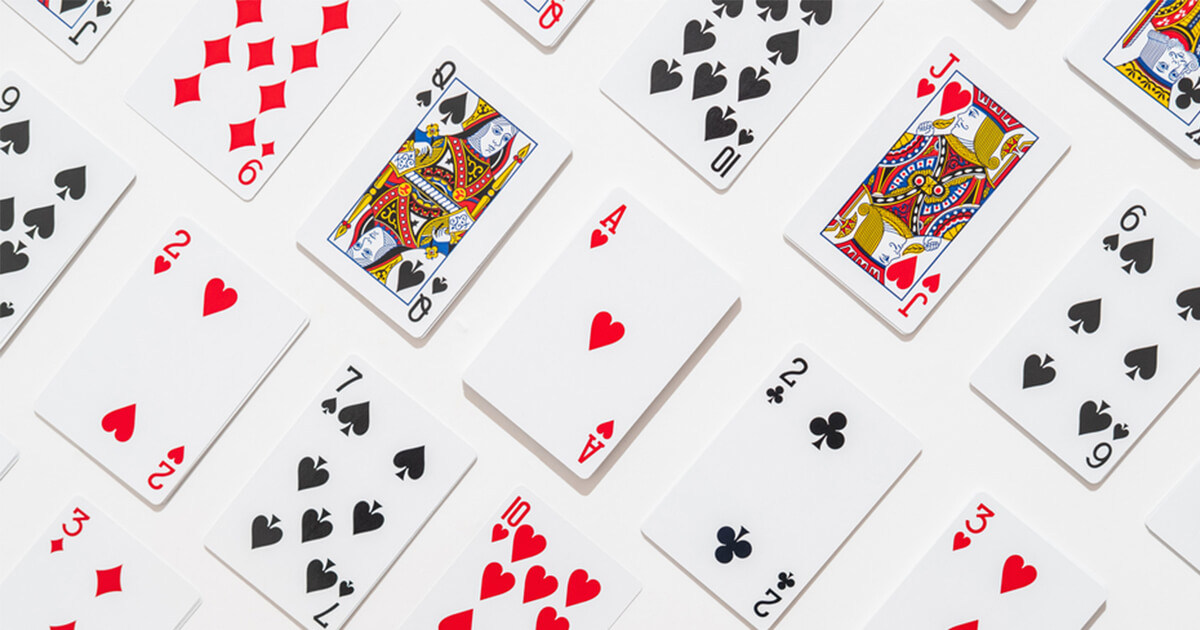
Card games at home
We all spend a lot of time at home this year. So it is not wrong to look for new, entertaining activities. Otto Balkenbogen introduces some interesting card games here in sisterMAG, which may become your next favourite pastime.
- Text: Otto Balkenbogen
»At home …«
… when stuck at home, then with drive, action and excitement – we want to play!
Great idea, and my advice is to start with the well-known »Mensch, ärgere Dich nicht« because it fits the general mood. And in particular, we learn to lose from the start, to reduce stress, to stay in a good mood. We want to keep things nice at home…
Did you know that this board game has existed since 1910? It’s suitable for two to six people, can be played in several variations and there are even German and international single and team championships for »Mensch ärgere Dich nicht«! In this game, it’s important to roll a six and to oust the counterparty from their place to the starting position. But everybody knows that, I guess.
Sure, playing is fun, you are in company and get distracted from the stress of everyday life. Skat, Sixty-Six, Rummy or Doppelkopf are popular variants. I have added some game suggestions, maybe you can try them out. Have fun with them!
17 + 4
The principle
The objective is to reach 21 points with two or more cards or to get as close to them as possible. The attraction is to make the right decision of whether to take another card or not. The player who has the most points without exceeding the maximum of 21 points wins.
The conditions
Following the rules, you can play with 52 French cards, but 32 German cards are possible as well. In both decks of cards, the values are the same:
Ace 11 Points
Picture cards (jack, queen, king) 10 Points
Numerals like the values they show
The beginning
Before the game starts, it’s determined who is the banker and deals the cards. After shuffling the cards, they determine the stake, followed by the other players. Their stakes must not be higher than the banker’s.
The game
Now the banker deals the cards: two face-down cards for every player, one face-down card for themselves. The remaining cards stay face down in the middle of the table.
Important: Every player looks at their cards now and checks if they are already as close to 21 as they want them to be.
The player on the left of the banker says first whether they want another card or not. If their score is already enough, they must reveal their hand. If the score is over 21, they lose immediately. If they are satisfied, it’s the next one’s turn. When all players have made their decisions, the banker draws their second card. Both they and the players can ask to draw more cards but must not exceed 21. Otherwise, they lose and their stakes go to the bank. If the banker exceeds 21, all remaining players win and get their stakes as profit on top. If the banker gets 21 or less, the players who have more points than them without exceeding the maximum of 21 points win.
If a player believes on the basis of their two cards that they can beat the banker in any case, they say »bank« and set their stake as high as the total stake. They reveal their cards. However, if the score of the player is the same as the one of the banker, the bank wins.
Like this version, there are several rule variations that you can use individually.
17 + 4 is very similar to Blackjack.
Gin Rummy
This game came from America in 1909 and is a variation of Rummy.
The principle
The objective is to collect matching combinations. Every player tries to collect matching cards in their hand. This works in
- Groups or sets as triplets or quadruplets with cards of the same value: e.g. three queens or four fours
- Sequences with several successive cards of the same suit: e.g. 2-3-4 in hearts or ace-2-3 in spades (the ace only counts as one point!)
The conditions
The players use a French deck of cards with 52 cards. You can also use two packs of cards like for Rummy. Two players play the game.
The card values:
The tens and the picture cards count for ten points each,
Aces (see above) only 1 point (!) and
the numerals 2 to 9 according to their values.
The beginning
After shuffling, every player gets ten cards. One card from the remaining pile is placed face up, the rest face down.
The game
The drawing and laying-off in order to collect can begin! The player who didn’t deal the cards starts.
A turn consists of drawing a new card from the face-down pile and of discarding one card that is no longer needed to the discard pile. The player can also draw a card from the discard pile, but only if they can lay-off a group or sequence with this card.
The cards in one player’s hand that don’t fit into any combination should have a low value. If this value is ten or lower, this player can (but doesn’t have to) knock. This means that they put their cards face up on the table. The other player can lay-off matching cards from their hands on these cards. The game ends.
The values of the cards that don’t match are counted and set off against each other. The one who knocked gets positive points if the value of their »bad« cards is lower than the other player’s. The difference counts for them. If, in the opposite case, the value of the not-matching cards of the player who didn’t knock is lower than the knocking player’s, the player who didn’t knock gets a bonus of ten points on top of the difference.
If the knocking player puts a hand on the table where all cards fit into groups or sequences, i.e. the value of the not-matching cards is zero, this luck is called gin. Usually you play several games and settle up in the end.
In old times, the winner recieved bottles of rum or gin, which isn’t forbidden nowadays!
Preference
This card game has been around since the 18th century and was mainly played in Austria-Hungary.
The principle
Every player tries to take as many tricks as possible. It’s not a fast game since thinking, calculating, maybe even negotiating are part of it. You play for tokens, but if you want, you can also play for money. I recommend cents.
The conditions
The game is suitable for three players and is played with a French deck of cards with 52 cards.
The values:
Hearts has the highest value, the order is clubs-spades-diamonds-hearts.
Within the suit, the order is 7-8-9-10-jack-queen-king-ace.
The beginning
The dealer is drawn by lot or determined by card drawing. The player with the highest card deals the cards.
Attention! In the game of Preference, the suit has priority over the rank of a card, e.g. an eight of hearts is higher than an ace of spades.
The dealer gets the stake (ten tokens or ten cents) ready. After shuffling and picking up, every player gets three cards and four more after two cards are put face down on the table (talon). Lastly, everyone gets three more cards.
Then every player checks their cards and decides if they want to play. The requirement is that they can take six tricks. Otherwise they only play if they can take at least two tricks.
Determination of the soloist, the »declarer« by bidding
- The player on the left of the dealer first calls: »Pass«, or declares for example: »one« (game of clubs)
- The middle hand passes or outbids for example with »two« (game of spades)
- The dealer also passes or outbids with »three« (game of diamonds).
The soloist (declarer) will be the one who bids the highest. They may take the two cards facing down and discard two less good ones. Then they determine the trump suit that must match at least the highest bid. The two other players then say if they want to follow suit or »stay home«. The latter lay-off their cards face down. If both of them stay home, the soloist wins the whole stake. A new turn starts with the new dealer who sits clockwise next to the first dealer.
A game »from the hand« is possible as well. The two hidden cards stay put. The player announces the »deal«. If more than one claim »from the hand«, the one with the highest suit becomes the soloist.
The game
If both or only one of the other players follows suit, the game is played clockwise. The soloist plays and the tricks are taken. The other players must either trump or follow suit. After that, the player who took the last trick plays.
There is a suit and trump compulsion according to the following scheme:
- if possible, trump with a higher card of the same suit
- if not possible, follow suit with a lower card of the same suit
- if this is not possible as well, you have to take trick with a trump card
- if not possible, follow suit with any other card
In order to win the game, the declarer has to take at least six tricks, the other players need two tricks in order to not fall.
For every trick, the player gets one token. If another player didn’t take their two tricks, they are punished with a penalty of ten additional tokens in the next game. The soloist is punished as well if they don’t take their six tricks: double stake in the next game and the stake of the dealer.
If hearts is the trump suit, the game is called Preference and is declared that way. If the soloist (declarer) wins, the other players have to give them five tokens, if the soloist loses, they have to pay five tokens to the others and have to double the stakes in the next turn.
Next to »preference«, this game offers several interesting special rules.
Cego – the Baden Tarock
Cego is a variation of Tarock. This form is particularly at home in the Black Forest where the farmers play Cego on lonely winter evenings – just the right thing for our current »stay at home«. It is not an easy game.
The principle
By bidding and increasing in a prescribed and very personal manner, the solo player is determined by who wins against the three other players.
The conditions
The game is usually intended for four players but is also possible with three. It needs a special deck of cards that consists of 54 cards in the design of French Tarock.
The cards consist of
22 trumps (trucks – numerals 1-21 and the highest trump, the »Gstieß«), the
16 picture cards (four kings, four queens, four knights and four jacks) and
16 so-called empty cards (four hearts and four diamonds – 1-4 – as well as four clubs and four spades – 10-7)
Their value:
Trumps 1 (»small man« or
»Babber«) 5 points
21 (»moon«) 5 points
Stieß/Gstieß 5 points
other trumps 1 point
Picture cards King 5 points
Queen 4 points
Knight 3 points
Jack 2 points
Empty cards 1 point each
With four players, all 54 cards are used. With three players, the four of diamonds, the seven of clubs and the seven of spades are removed and 51 cards remain.
The beginning
Dealing the cards (for four players):
- Ten cards are put in the middle as »blind«.
- Every player gets 11 cards – »hand cards«.
- The cards are dealt counter-clockwise, like the game direction
First the players check their cards and decide if they can play a solo.
A solo is possible:
- if a player holds eight trucks with two of them having a higher value than 17 points and only two suits
- if nine or more trucks are present, values don’t play a role
The bidding
If no solo is called, the solo player is determined by increasing.
The solo player doesn’t play with their hand cards but with the ten »blinds«. They complete them with cards (see below) from their hand. They are added to the points of the solo player in the end.
- Cego!
This is what the player sitting to the right of the dealer says. They first take a turn. They go on playing with the »blind« they completed with two cards from their hand (the highest trucks they have) and which the player doesn’t show to the others. If the bidding doesn’t continue, the player puts any cards to the discarded hand cards so they have ten cards again.
- If the player sitting to the next right also wants to play with the »blind«, they have to call: »one card«. It has to be a high numeral. The first player can pass, counteract or leave the game to the second player.
- The third player wants to follow suit and calls: »one blank«! They show it openly and take the »blind«.
- An increase is reached with the call: »two blanks«. The player has to take from their hand cards, which need to have the same suit. For the equality of the cards, they have to discard the lowest truck from the »blind« they take.
- Intensification with the call: »two different«, but the player has to show the highest truck from the »blind« to the others and discard it.
- The last bid is the call: »Babber« or »Pagat«. The player announces that they want to play with their truck »1« from their hand cards. It is put on the table and the other players have to trump it.
The game
The one who bid the highest may play. They can even take a higher game (e.g. won »one card« and can continue with »two blanks«, why? See score above!)
As given under steps one to six, they exchange their hand cards accordingly. Then they release the game and play first.
The following rules apply in the game:
- Suit has to be served, even trump
- If not possible and trump is existing, it will be used
- If no trump is existing, any card can be given
Now the one who took the last trick plays.
The score
The solo player adds the discarded hand card to their tricks.
The score can take place in groups of two or three, it’s easier with simple addition of the values.
The values are determined by the bidding:
- Cego = 1 time
- One card = 2 times
- One blank = 3 times
- Two equal blanks = 4 times
- Two different blanks = 5 times
- Babber = 6 times
- Solo wins 2 times and loses 1 time
If the bid was against a solo, it is increased by one level.
Supplemental and individual special rules are available here as well.






